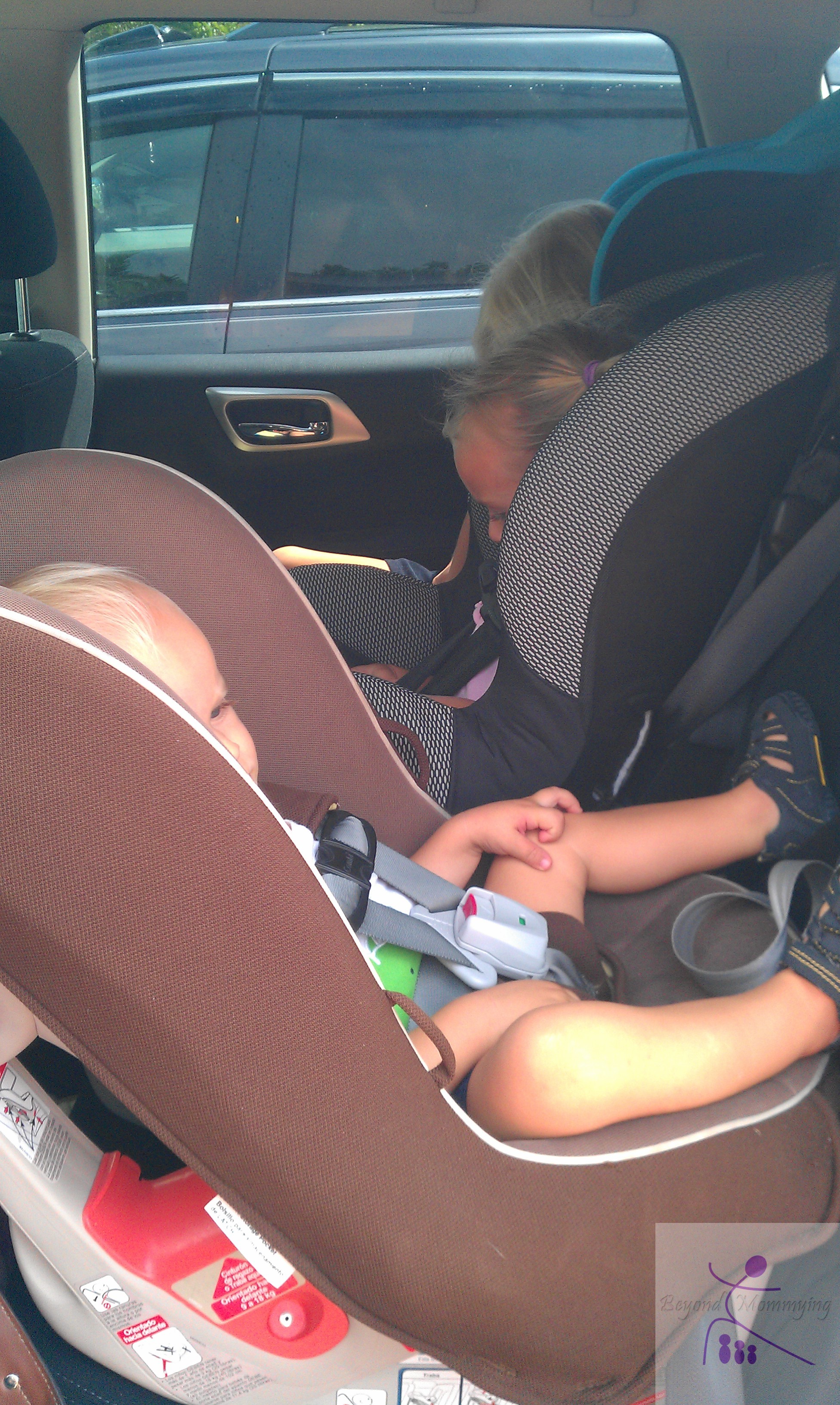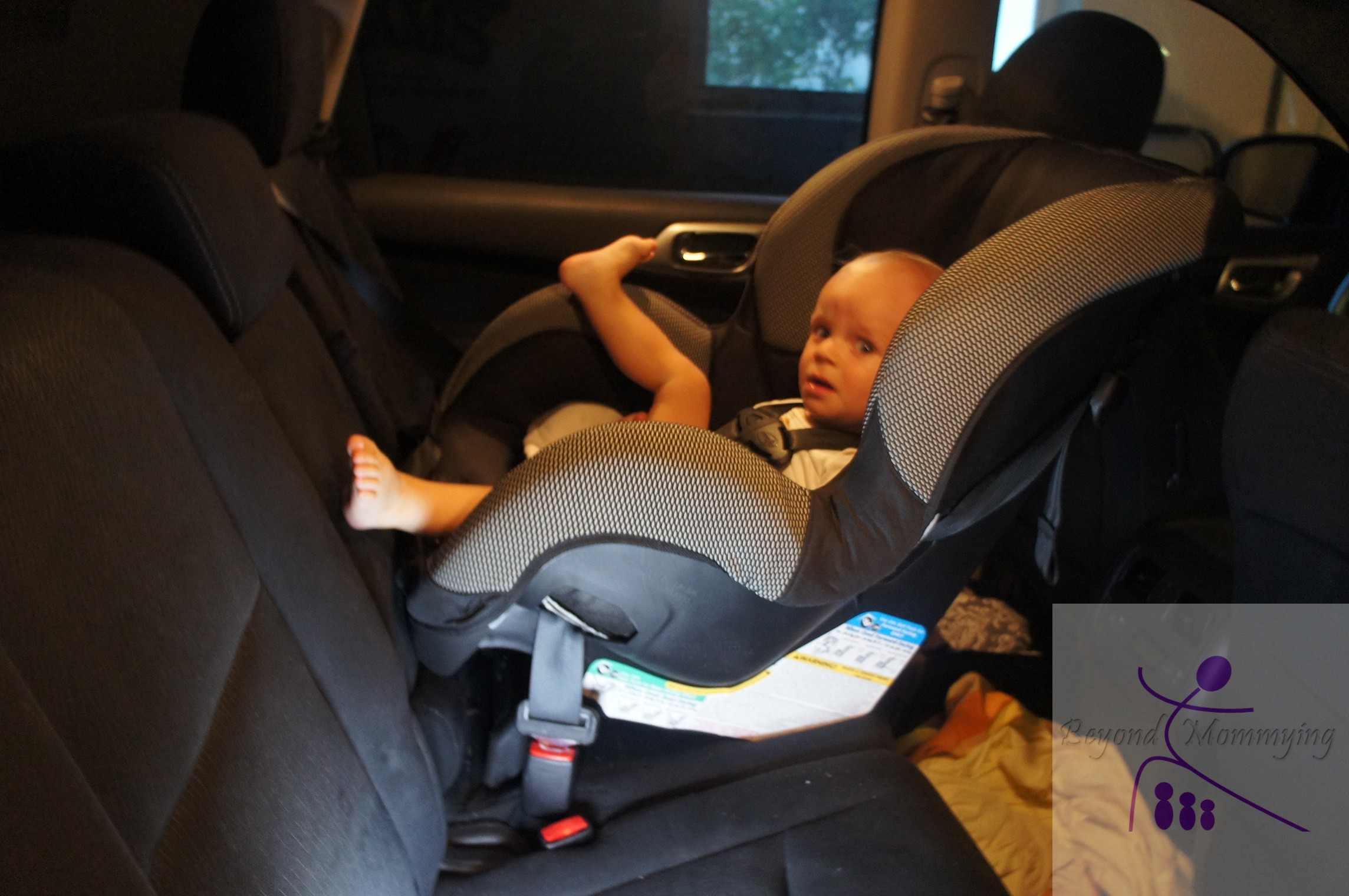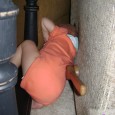There are a lot of milestones and firsts in the early years of children’s lives. Some of these moments are looked on as “rights of passage,” big steps in a child’s life towards true big kid status and independence.
One such event is turning a child facing forward in the car. Many people are excited for this momentous event and do it as soon as they can (at 1 year old usually).
But if you’re a car seat safety fanatic like me, this moment is nerve wrecking and incites fear in your soul.
 Sugarplum is 4 years and 2 months and I flipped her car seat forward facing in my car last week so I now have two forward facing car seats and a rear facing car seat.
Sugarplum is 4 years and 2 months and I flipped her car seat forward facing in my car last week so I now have two forward facing car seats and a rear facing car seat.
It was not an easy decision for me but I decided to do it because I was not comfortable with the rear facing install in the seating position she was in (the seat was knocking loose every time she got in) and my only other option was to put Doodle in the middle but then I wouldn’t be able to easily reach him to buckle him in my big car.
Luckily, Sugarplum is now over 4 years old and safe forward facing (though she, like everyone else, would be safER still rear facing). If she was under 2 years old then I wouldn’t have had a choice, she would have had to stay rear facing since that is the minimum safe age for turning a child forward facing according to the American Academy of Pediatrics, the National Highway Traffic Safety Administration and every professional car seat technician I’ve ever known.
So what’s with the 1 year milestone? It’s based on outdated information and while many people believe the law is 1 year and 20 pounds to forward face, that’s not the case in most states. A lot of states have “proper use” laws meaning you must use your child seat per the manufacturer guidelines (which for major safety reasons you always should anyways!)
Not all seats allow a child to forward face at 1 and 20. Many are 22 pounds now (10 kilo) and one we have requires the child to be 34 inches tall. And now Dorel group (makers of Cosco, Maxi Cosi, Safety 1st and Eddie Bauer branded seats) are going to require a child to be a minimum of two years old to use their seats forward facing.
If the laws won’t change to keep our children safer, I’m glad to see the car seat manufacturers will!
Of course, proper use is still up to the parents and I’m sure many parents will still forward face one year olds, even in the new 2 year minimum seats, increasing their child’s risk for neck injuries as well as other severe injuries.
So while the safest thing you can do is keep your child rear facing as long as they are within the rear facing limits of their convertible car seat, what can you do to keep a forward facing child as safe as possible?
ALWAYS use the top tether. Whether you install the car seat witht the lower LATCH anchors or with the vehicle seat belt, you should always attach the top tether for a forward facing car seat because it reduces head excursion in an accident by up to 6″ which is pretty major. If you have an older car without top tethers, many manufacturers can retrofit the top tethers so call your local dealership and ask!
Put the least protected child in the middle seat. Most first time parents are told to put the baby in the middle seat because it is safest and we go through our lives thinking the baby needs to always be in the middle because they are the most vulnerable. The truth is though, ideally, the child that should go in the middle is the child that is the least protective car seat. In our family right now, that is Sugarplum because she is the youngest in a forward facing harnessed seat. When Honeybun bumps up to a booster then she will go in the middle. And while Doodle may be the youngest, he is the most protected in his rear facing seat.
Make sure the straps are coming out of the car seat shell above the child’s shoulders, not from below as they should be when rear facing. This again has to do with safety in an accident.
When installing the car seat in the vehicle, as with rear facing seats, use either the lower LATCH anchors or the vehicle seat belt, not both and check for less that 1 inch of side to side and front to back movement at the belt path (movement at the top of the seat is normal and will be reduced by the use of the top tether).








